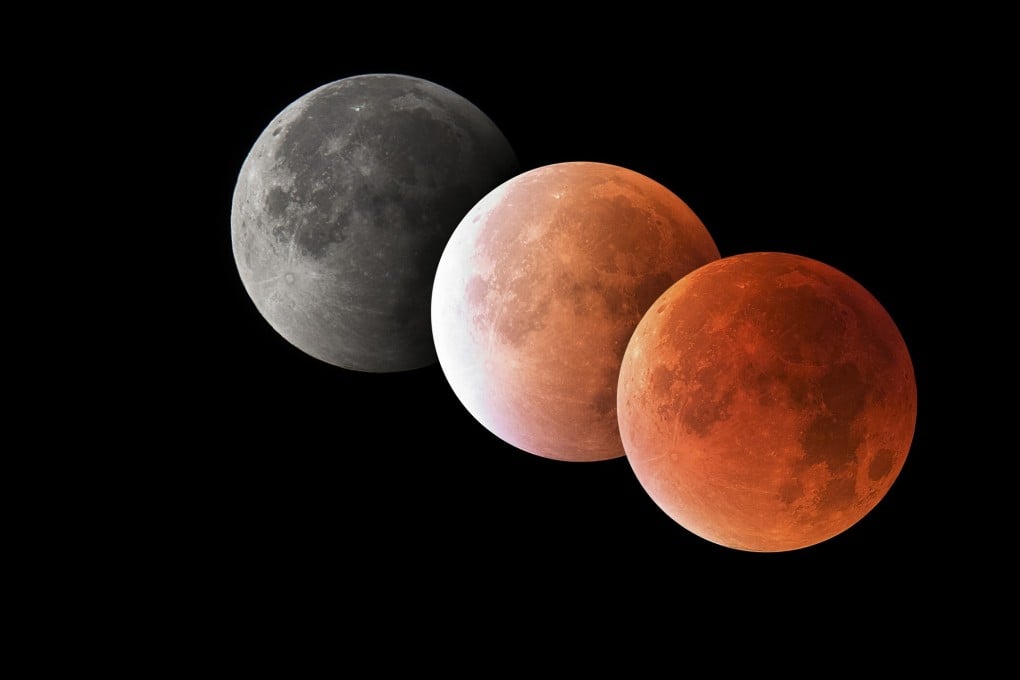Explainer | Pacific Rim super blood moon lunar eclipse this week: when it is, what to expect, and which places will have the best view
- A super moon happens when a full moon occurs at the point the moon’s orbit brings it closest to Earth. A blood moon appears when it moves through Earth’s shadow
- A combination of these events occurs on Wednesday, with a total lunar eclipse, then a partial and a penumbral eclipse; the moon appears red, then fades to grey

Just after sunset on May 26 a “super blood moon” will hang in the eastern sky over Hong Kong, as a super moon and a total lunar eclipse combine in a rare celestial alignment.
The first total lunar eclipse for Asia in almost three years, it’s set to be a brief but dramatic sight. It will be visible for just 15 minutes from around the Pacific Rim on the entire night side of Earth, and onlookers will be hoping for clear skies as the moon turns a reddish-orange.
What causes a super blood moon?
The moon orbits Earth in a slightly elliptical orbit every 27 days, so there’s a point every month when it’s farthest away and another when it’s closest. This movement towards and away causes tides in the oceans. When a full moon occurs while it is at its closest to Earth, that’s called a super moon.

It’s happened a few times this year already, but this “flower moon” will be the closest of the year. It will get to within 357,311km of Earth just nine hours before the “blood moon”, or total lunar eclipse. The result is that this full moon will look about 8 per cent larger than an average full moon. Usually that means an extra-bright full moon, but not this month. However, do expect king tides in Victoria Harbour.
What causes a total lunar eclipse?
A blood moon is the result of a full moon moving through Earth’s shadow. That can happen when the Earth is between the sun and the moon, but it’s rare because the moon’s orbital path around Earth is off-kilter, so it usually moves beneath or over Earth’s shadow. If that were not the case, there would be a total lunar eclipse every month. The last one in Hong Kong was a “half-blood” partial lunar eclipse on July 17, 2019.